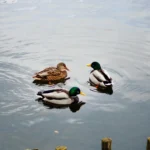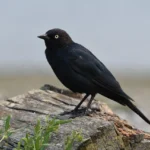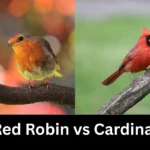Florida is a haven for bird enthusiasts, boasting a rich array of heron species thanks to its wetlands, marshes, and coastal habitats. These striking birds, known for their elegant appearances and fascinating behaviors, play vital roles in maintaining the balance of aquatic ecosystems. This guide provides information on the unique characteristics, habitats, and conservation statuses of herons found in the Sunshine State, offering a comprehensive overview for bird watchers and nature lovers alike. Whether you’re exploring mangroves or freshwater marshes, Florida’s herons are sure to captivate and inspire appreciation for the natural world.
Table of Contents
14 Types of Herons in Florida
1. Black-crowned Night Heron

Scientific name: Nycticorax nycticorax
Life span: 10-15 years
Size: 23-28 inches
Weight: 1.5-2.2 pounds
Wingspan: 44-46 inches
Status: Least Concern
The Black-crowned Night Heron is a medium-sized bird, easily recognized by its contrasting black cap, white body, and piercing red eyes. These nocturnal birds roost during the day in wooded wetlands or mangroves and emerge at dusk to forage. They have an omnivorous diet, including fish, crustaceans, insects, and plant material. Adapted to urban environments, they often nest near human settlements. Their slow and deliberate hunting technique makes them efficient predators. With a life span of up to 15 years, this heron’s resilience is well-suited to a variety of wetland habitats.

2. Yellow-crowned Night Heron

Scientific name: Nyctanassa violacea
Life span: 6-10 years
Size: 21-27 inches
Weight: 1.5-2.0 pounds
Wingspan: 39-44 inches
Status: Least Concern
The Yellow-crowned Night Heron is most famous for its distinct yellow crown stripe, grayish-blue body, and contrasting black face. Preferring coastal marshes and tidal flats, this heron specializes in crustaceans, especially crabs, which form the majority of its diet. Active at dusk and nighttime, it employs stealth and patience while hunting. Nesting in colonies, often alongside other waders, it constructs platform nests in mangroves or wooded areas. This species is an excellent indicator of healthy coastal ecosystems. Despite habitat loss, its conservation status remains Least Concern, thanks to its adaptability and stable population in suitable environments.
3. Little Blue Heron
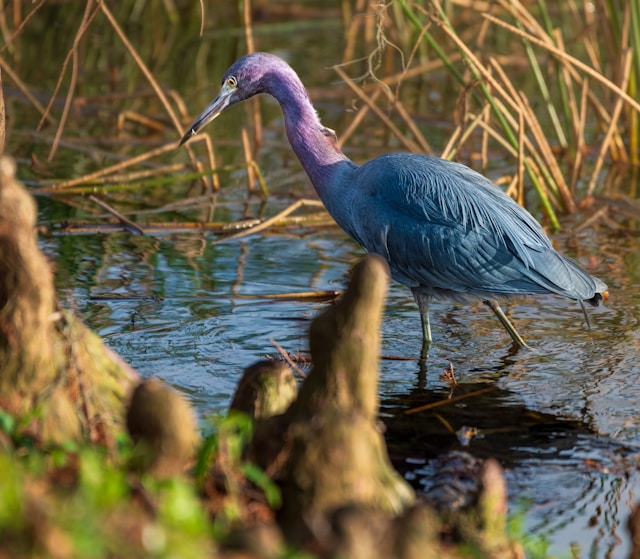
Scientific name: Egretta caerulea
Life span: 7-17 years
Size: 22-29 inches
Weight: 0.8-1.3 pounds
Wingspan: 39-41 inches
Status: Least Concern
The Little Blue Heron showcases a remarkable transformation, starting as a white juvenile before maturing into a slate-blue adult with maroon accents on the neck. Found in freshwater marshes and brackish habitats, they are skillful hunters, feeding on small fish, amphibians, and insects. These herons are known for their slow, calculated movements and precise strikes. Nesting in mixed-species colonies, they often share resources with other herons and egrets. Their preference for undisturbed wetlands makes habitat conservation vital for their survival. Although not currently endangered, habitat destruction poses a long-term threat to this species.
4. Tricolored Heron

Scientific name: Egretta tricolor
Life span: 10-14 years
Size: 24-26 inches
Weight: 0.9-1.2 pounds
Wingspan: 37-39 inches
Status: Least Concern
Renowned for its elegant mix of blue-gray, white, and reddish-brown feathers, the Tricolored Heron is a frequent inhabitant of estuaries, marshes, and lagoons. This medium-sized heron exhibits dynamic feeding techniques, such as running, wing-flicking, and darting to catch small fish and crustaceans. It breeds in colonies and often nests in mangroves or shrubs near water. Known for its adaptability, it thrives in both freshwater and saltwater environments. With a population trend that appears stable, the Tricolored Heron holds a Least Concern conservation status, highlighting its resilience in diverse wetland ecosystems.
5. Snowy Egret

Scientific name: Egretta thula
Life span: 10-15 years
Size: 20-27 inches
Weight: 0.8-1.0 pounds
Wingspan: 39-41 inches
Status: Least Concern
The Snowy Egret, with its striking white plumage and contrasting black beak, legs, and bright yellow feet, is a spectacle in Florida’s wetlands. These small herons are known for their energetic foraging style, often chasing prey through shallow waters. Preferring both freshwater and saltwater habitats, they feed on fish, crustaceans, and insects. Their elaborate breeding plumage and courtship displays make them a favorite among birdwatchers. While their population is stable, historic overhunting for their feathers reminds us of the importance of conservation efforts. Today, they are classified as Least Concern but continue to depend on healthy wetland habitats.
6. Cattle Egret
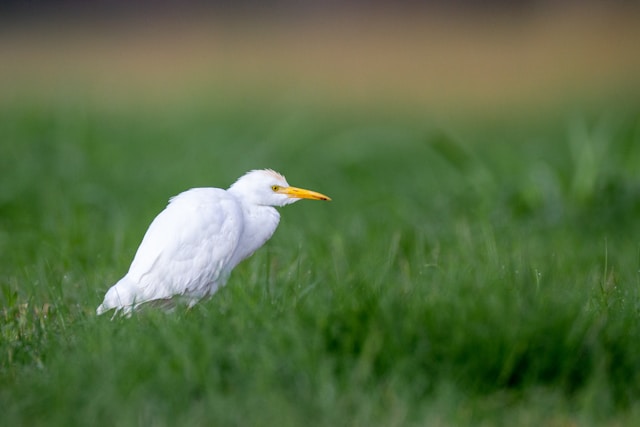
Scientific name: Bubulcus ibis
Life span: 10-15 years
Size: 18-22 inches
Weight: 0.9-1.4 pounds
Wingspan: 35-38 inches
Status: Least Concern
The Cattle Egret is a unique heron species often found far from water, in pastures and agricultural areas. Known for its symbiotic relationship with livestock, it feeds on insects disturbed by grazing animals. This small, stocky bird has white plumage with a buff-colored crown during the breeding season. Unlike other herons, they frequently nest in large colonies in trees or shrubs near water. Their adaptability has allowed them to expand their range significantly, and their population is considered stable. As a species of Least Concern, the Cattle Egret continues to thrive in diverse environments, from wetlands to dry grasslands.
7. Green Heron
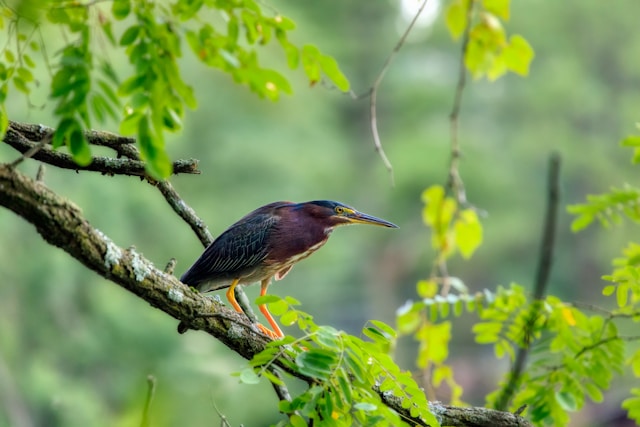
Scientific name: Butorides virescens
Life span: 7-10 years
Size: 16-18 inches
Weight: 0.5-0.8 pounds
Wingspan: 25-27 inches
Status: Least Concern
The Green Heron is a master of stealth, blending seamlessly into dense vegetation along streams, ponds, and wetlands. Its dark green back and chestnut-colored neck give it a distinctive appearance. Uniquely, this heron uses tools, such as dropping insects or other bait into the water to lure fish—a rare behavior in birds. They are solitary hunters, preferring to ambush prey with a sudden strike. Green Herons are known for their adaptability, thriving in both rural and urban settings. While their population is stable, wetland preservation is critical for their continued success.
8. Least Bittern

Scientific name: Ixobrychus exilis
Life span: 8-10 years
Size: 11-14 inches
Weight: 0.2-0.3 pounds
Wingspan: 17-18 inches
Status: Least Concern
The Least Bittern, the smallest heron species in Florida, is an elusive bird that thrives in dense reeds and cattails. Its compact body and striped plumage provide excellent camouflage, making it challenging to spot. Preferring freshwater marshes, it feeds on small fish, insects, and amphibians. Its unique ability to grasp vertical stems allows it to navigate through dense vegetation. The Least Bittern’s soft, cooing call is often the only clue to its presence. Despite habitat loss, its conservation status remains Least Concern, thanks to its adaptability and widespread range.
9. American Bittern

Scientific name: Botaurus lentiginosus
Life span: 8-15 years
Size: 23-33 inches
Weight: 1.5-3.3 pounds
Wingspan: 42-50 inches
Status: Least Concern
The American Bittern is a solitary and secretive heron known for its streaked brown plumage that helps it blend into marshy surroundings. Found in freshwater wetlands, it feeds on small fish, amphibians, and invertebrates. Its deep, booming call is a defining feature of its breeding season. These birds are highly territorial and rely on dense vegetation for nesting and foraging. Although not endangered, habitat destruction poses a significant threat to their population. Conservation efforts focused on wetland restoration are essential to ensure their survival.
10. Purple Heron

Scientific name: Ardea purpurea
Life span: 10-20 years
Size: 29-38 inches
Weight: 1.5-3.0 pounds
Wingspan: 47-57 inches
Status: Least Concern
The Purple Heron is a rare visitor to Florida, easily recognized by its reddish-brown plumage and slender neck. Found primarily in marshes and reed beds, it feeds on fish, frogs, and small mammals. These herons are known for their slow and deliberate movements while hunting. Though more common in Europe, Asia, and Africa, occasional sightings in Florida highlight its migratory tendencies. Its conservation status is Least Concern, but habitat protection remains critical for sustaining its global population.
11. Striated Heron

Scientific name: Butorides striata
Life span: 5-10 years
Size: 16-18 inches
Weight: 0.4-0.7 pounds
Wingspan: 25-28 inches
Status: Least Concern
The Striated Heron, a relative of the Green Heron, is occasionally spotted in Florida. It has a compact body, bluish-gray plumage, and a black cap. Preferring mangroves and tidal zones, it feeds on fish and crustaceans. Its patient hunting technique and ability to blend into its surroundings make it an effective predator. While its presence in Florida is rare, it thrives in tropical and subtropical regions worldwide. Conservation efforts in mangrove ecosystems benefit this species and others that rely on similar habitats.
12. Whistling Heron
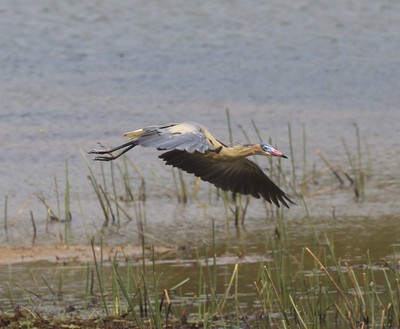
Scientific name: Syrigma sibilatrix
Life span: 10-15 years
Size: 25-28 inches
Weight: 1.2-2.0 pounds
Wingspan: 40-46 inches
Status: Least Concern
The Whistling Heron is an exotic bird, occasionally found in Florida but native to South America. Its pale blue-gray plumage, yellowish neck, and distinctive whistling call set it apart. Preferring open wetlands and savannas, it feeds on insects, small fish, and amphibians. While not a common resident, its sporadic appearances delight bird enthusiasts. Its conservation status is Least Concern, supported by a stable population across its native range.
13. Great Blue Heron
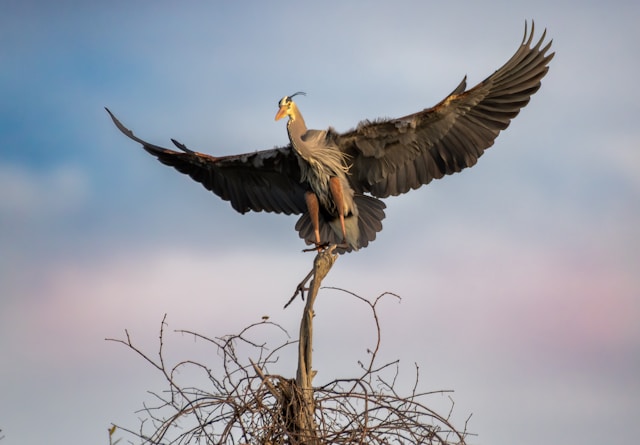
Scientific name: Ardea herodias
Life span: 15-24 years
Size: 36-54 inches
Weight: 4.0-5.5 pounds
Wingspan: 66-79 inches
Status: Least Concern
The Great Blue Heron, the largest heron in Florida, is a majestic bird with slate-gray plumage and striking head plumes. Found in both freshwater and saltwater habitats, it feeds on a variety of prey, including fish, amphibians, and small mammals. Known for its deliberate hunting style, it can stand motionless for extended periods before striking. With a long life span and a widespread range, this species is a testament to the resilience of wetland birds. Its conservation status is Least Concern, emphasizing the importance of maintaining healthy aquatic ecosystems.
14. Reddish Egret

Scientific name: Egretta rufescens
Life span: 12-16 years
Size: 27-32 inches
Weight: 1.0-1.6 pounds
Wingspan: 46-48 inches
Status: Near Threatened
The Reddish Egret is an active and agile hunter, often seen performing “dances” in shallow waters to flush out prey. Its shaggy reddish neck and slate-gray body make it one of the most distinctive herons in Florida. Preferring coastal lagoons and salt flats, it feeds primarily on fish. This species is Near Threatened due to habitat loss and declining populations. Conservation efforts focused on protecting coastal wetlands are vital for its survival.
Conclusion
Florida’s wetlands and coastal habitats provide a sanctuary for a remarkable variety of heron species. Each of these birds, from the stealthy Green Heron to the majestic Great Blue Heron, plays a crucial role in their ecosystems. Observing these herons offers not only an aesthetic delight but also a deeper understanding of the importance of preserving wetlands and natural habitats. As human activity continues to threaten these environments, conservation efforts remain vital to ensuring the survival of these elegant birds. By exploring and protecting Florida’s ecosystems, we can continue to enjoy the beauty and diversity of its herons for generations to come.

Welcome to World Birds Life, where the wonder of birds takes center stage. My name is Lexi, and I’m passionate about helping you discover the beauty and joy that birds bring into our lives.


